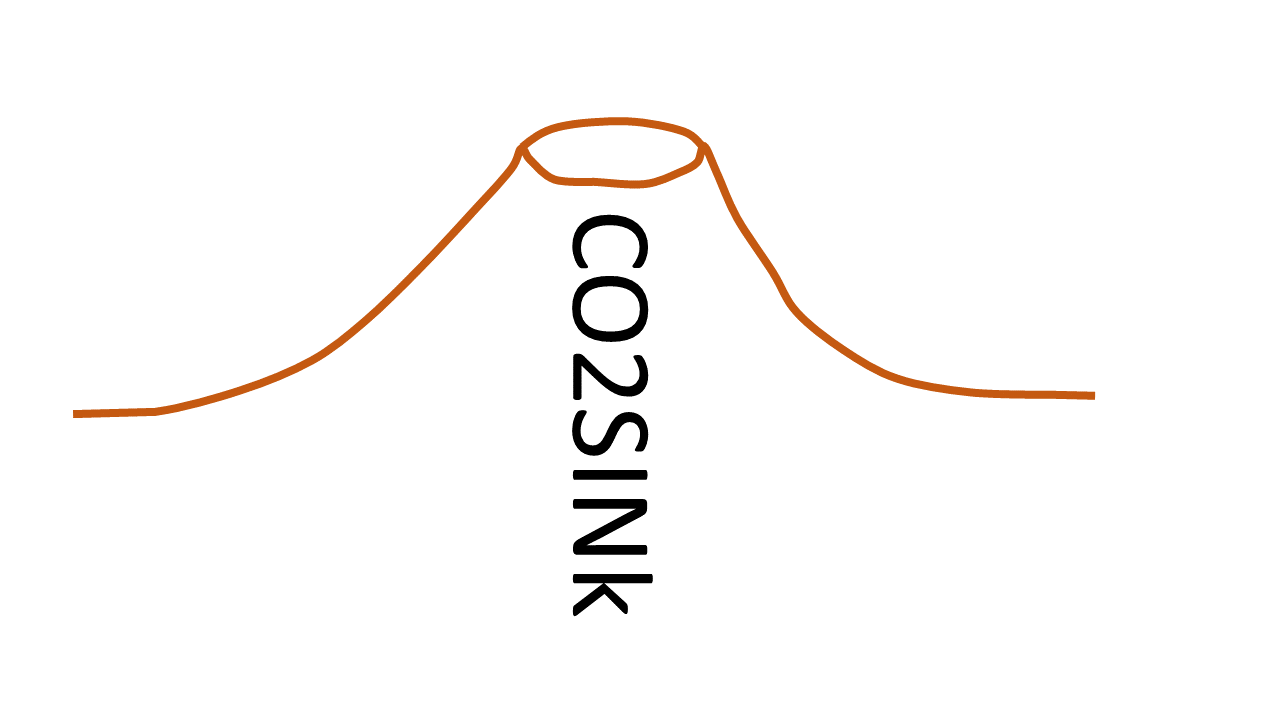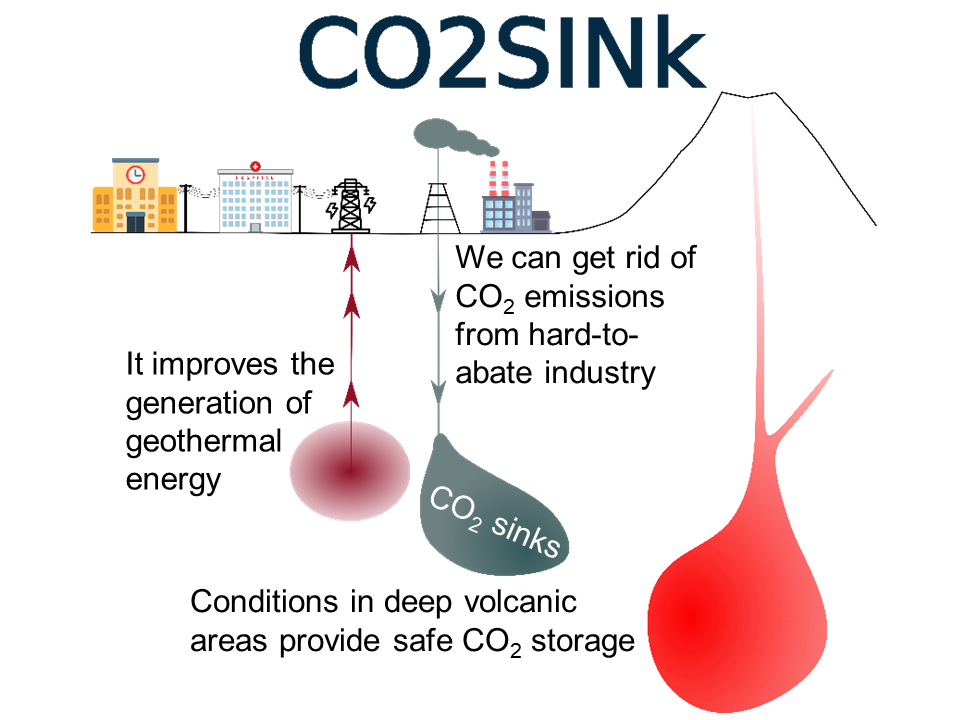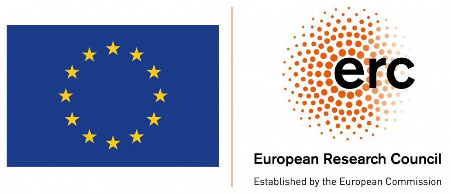Brief description of the Proof of Concept
 To mitigate the climate emergency, we must achieve net-zero carbon emissions to the atmosphere or even achieve a net carbon removal. Renewable energies will allow us to have energy that has no associated emissions, but even if we are supplied entirely by renewable sources, there will still be carbon dioxide (CO₂) emissions associated with the chemical reactions that take place in the production process of some materials, such as cement, steel or fertilizers. These processes currently emit several gigatons (billion tons) of CO₂ per year. The only way to eliminate this large amount of emissions is to capture the CO₂ in the industries before it is emitted into the atmosphere, and inject it deep underground. Therefore, a huge CO₂ storage capacity is needed. The conventional geological CO₂ storage concept proposes to inject it into sedimentary rocks, which are abundant all over the planet. Under the pressure and temperature conditions at which CO₂ is stored in sedimentary rocks, CO2 is less dense than the brine that fills the pores of the rocks, so it floats and there is some risk of CO₂ leakage if the low-permeable caprock fail.
To mitigate the climate emergency, we must achieve net-zero carbon emissions to the atmosphere or even achieve a net carbon removal. Renewable energies will allow us to have energy that has no associated emissions, but even if we are supplied entirely by renewable sources, there will still be carbon dioxide (CO₂) emissions associated with the chemical reactions that take place in the production process of some materials, such as cement, steel or fertilizers. These processes currently emit several gigatons (billion tons) of CO₂ per year. The only way to eliminate this large amount of emissions is to capture the CO₂ in the industries before it is emitted into the atmosphere, and inject it deep underground. Therefore, a huge CO₂ storage capacity is needed. The conventional geological CO₂ storage concept proposes to inject it into sedimentary rocks, which are abundant all over the planet. Under the pressure and temperature conditions at which CO₂ is stored in sedimentary rocks, CO2 is less dense than the brine that fills the pores of the rocks, so it floats and there is some risk of CO₂ leakage if the low-permeable caprock fail.
The objective of CO2SINk is to explore the commercialization possibilities of a new concept of geological CO₂ storage proposed in the ERC Starting Grant GEoREST. This innovative concept consists of injecting CO2 into deep volcanic areas, where the high temperature causes the CO₂ to be denser than water and, therefore, CO₂ sinks, significantly reducing the risk of leakage of this greenhouse gas into the atmosphere.
 Practical aplications
Practical aplications
CO2SINk applications are CO₂ capture projects for industries that emit CO₂, even if they are supplied by renewable energy sources, and have to store CO₂ underground to eliminate emissions. Volcanic areas permit benefiting from sinking CO₂. Places like Iceland, where 66% of the consumed energy comes from geothermal energy, have extensive experience with the injection and extraction of fluids in volcanic areas, and are therefore candidates to be pioneers in the implementation of this CO₂ storage concept. In Spain, however, there is hardly any awareness of the potential of geothermal energy as a renewable energy source. Combining CO₂ storage in deep volcanic areas with the production of very high temperature geothermal energy could be an excellent way to approach the goal of zero emissions.

